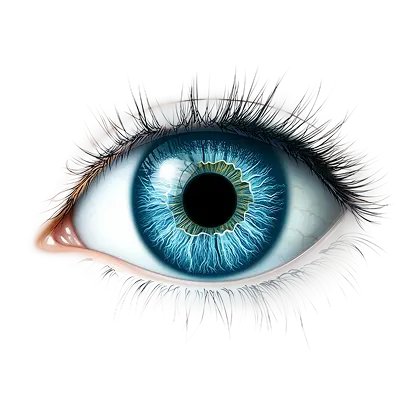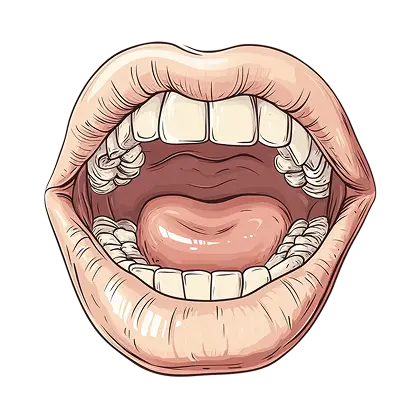

Eyes (noun) — are the organs of sight in humans and animals. They are usually round and located in the front of the face, allowing a person to see and perceive light, color, and movement.
They help people recognize shapes and are also important for balance and coordination.
Tips for “eyes” pronunciation
Start with the ai sound, like in I or my, and then add a soft z sound at the end, blending them quickly: ai-z.
Level up your English with Koto!
Examples: How to Use “Eyes” in a Sentence?
Here are some simple and vivid examples that illustrate how this word can be naturally used in different sentences to express emotions, actions, and even create imagery.
What Are Synonyms for the Word “Eyes”?
Here are synonymous expressions that reveal the many ways “eyes” enrich English, showing how this small word can capture vision, emotion, and even charm in everyday speech.
Related nouns: vision sight pupil beak iris
Synonyms (contextual): peepers (informal) orbs optics lookers
Common collocations: bright eyes close eyes eye contact sparkling eyes
“Eyes” Word Formation and Description in Context
Discover how “eyes” can come alive in language, blending with adjectives, verbs, and nouns to capture not just sight, but action, and personality in day-to-day conversations.
With adjectives: big eyes tired eyes sleepy eyes motivated eyes
With verbs: open eyes blink eyes roll eyes catch an eye
With nouns (noun + noun): eye doctor eye movement eye shape eye level
Idioms and Phrases with “Eyes”
What do “eyes” mean in idioms? They symbolize more than seeing — they reflect attention, admiration, protection, and deep affection, giving a richer, more vivid meaning to what you say.
-
Eyes wide open — To be fully aware of the risks or realities of a situation.
She went into the business partnership with hereyes wide open, knowing it wouldn’t be easy. -
To turn a blind eye — To ignore something wrong or undesirable on purpose.
The teacher turned a blindeye to the students whispering during class. -
To feast your eyes on — To look at something with great pleasure or admiration.
Tourists feasted theireyes on the breathtaking sunset over the mountains. -
The apple of someone’s eye — A person who is cherished above all others.
His granddaughter is the apple of hiseye , and he always talks about her proudly. -
To keep an eye on — To watch carefully or monitor something or someone.
Can you keep aneye on the soup while I answer the phone?
Test Your Knowledge of Eyes Meaning — Quiz Time!
It looks like you already can define eyes with all the aforementioned specifics, so we invite you to participate in our fun trivia and check if you truly know everything.
Enjoy personalized learning!
“Eyes” Word in Other Languages
An understanding of how to spell “eyes” and pronounce it in other languages will broaden your horizons while learning something new in lexical and grammatical terms.
| Language | Word for “Eyes” |
|---|---|
 Spanish
Spanish |
Ojos |
 French
French |
Yeux |
 German
German |
Augen |
Did You Know It? Fun Facts About “Eyes”
You may think that the definition of “eyes” is pretty straightforward and there isn’t anything surprising, but do not rush to such a conclusion, because these interesting details will offer you a “wow” effect!
-
The human eye can distinguish about 10 million different colors
The retina’s cone cells allow us to detect changes in the wavelength of light, which is an incredible ability. This example demonstrates the amazing sensitivity of our vision. Every day life would look much duller and far less vibrant if we did not have this multitude of perceptions. -
The fastest muscles in the human body are the eye muscles
In less than 0.1 seconds, these muscles make us blink, shielding our eyes from dust and intense light. These tiny but mighty muscles undergo a 24/7 shift every single day, yet no one notices. Every day, people blink thousands of times, all of which is in the range of 15 to 20 blinks per minute. -
The largest eye in the world belongs to the colossal squid
Imagine an eye that’s close to the size of a dinner plate, say 27 cm in diameter — that’s how big the eyes of deep-sea creatures like squids are. The oversized eyes enable them to spot threats even in the pitch-black deep ocean. Evolution works wonders, equipping creatures with such remarkable adaptations that they gained their place in the Guinness Book of Records. -
Each eye has about 107 million cells, most of which are light-sensitive
Rods help us see in dim light, while cones allow us to see colors and fine details. Together, they make vision one of the most complex human senses. This biological design enables us to adapt to both daylight and nighttime conditions. -
Some animals, like mantis shrimp, can see ultraviolet and polarized light
The mantis shrimp outshines humans with a staggering 16 color receptors, compared to three in our eyes. This provides an incomparable visual advantage, crucial for predation and survival. Their extraordinary eyesight has even inspired new ideas in scientific imaging technology.
Famous Quotes Featuring “Eyes”
Through quotations, literature, and discussions, the word “eyes” symbolizes attention, observation, and the lens through which we interpret the world.
Explanation: We see that Shakespeare is telling us that eyes show emotions and inner feelings more effectively than language can. A look in the eyes that we say “the eyes speak” would utterly express a feeling, or a love or grief, which is unhidden and deeply felt — life is a truth in itself.
— Martin Luther King, Jr.
Explanation: Retaliation in the form of more violence on the part of King provokes a lose-lose situation if we talk about humanity and justice. “Two wrongs have never made a right” stands as a perfect idiomatic definition of such resolve.
— Robert Kiyosaki
Explanation: This clearly distinguishes simple looking from truly imagining. This is because real change comes not from looking at things as they are, but from looking through them as things can be, because sometimes what is optimal comes from the bid of what is beneath.
— Jim Carrey
Explanation: Carrey jokingly notes that women tend to keep men in check. In this context, the eye-roll transforms into a playful metaphor denoting a mixture of patience, irony, or muted judgment behind a public victory — suggesting that even the brightest outcomes come with challenges.
— Al Pacino
Explanation: He highlights that although faces can mislead, feelings strike deeper. As people can be fooled by outward appearances, authentic emotions are far more difficult to conceal, pointing out that true issues lie beneath the surface.





